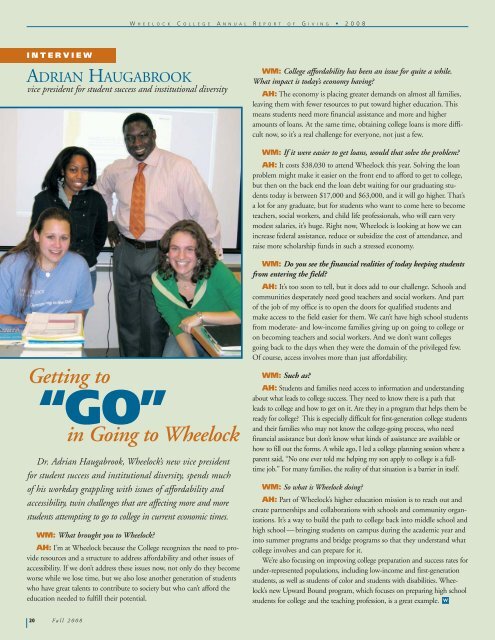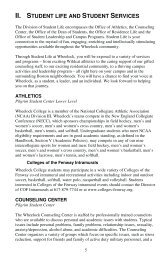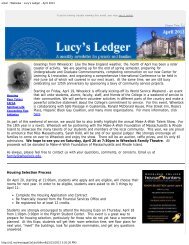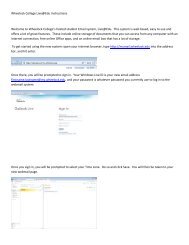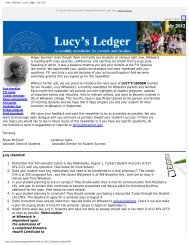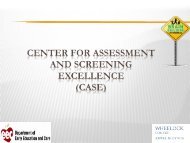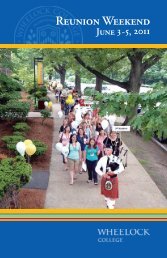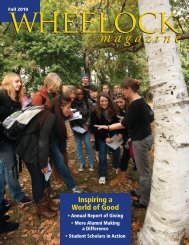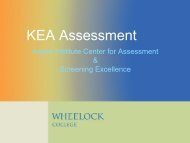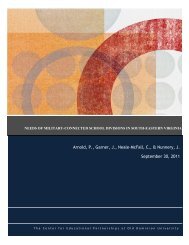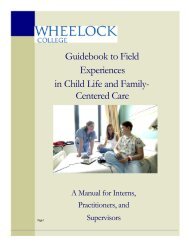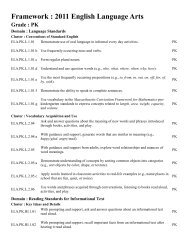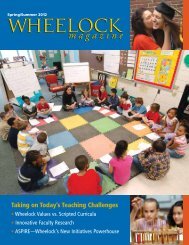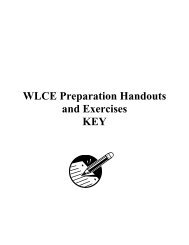Fall 2008 - Wheelock College
Fall 2008 - Wheelock College
Fall 2008 - Wheelock College
Create successful ePaper yourself
Turn your PDF publications into a flip-book with our unique Google optimized e-Paper software.
W H E E L O C K C O L L E G E A N N U A L R E P O R T O F G I V I N G • <strong>2008</strong><br />
INTERVIEW<br />
ADRIAN HAUGABROOK<br />
vice president for student success and institutional diversity<br />
WM: <strong>College</strong> affordability has been an issue for quite a while.<br />
What impact is today’s economy having?<br />
AH: The economy is placing greater demands on almost all families,<br />
leaving them with fewer resources to put toward higher education. This<br />
means students need more financial assistance and more and higher<br />
amounts of loans. At the same time, obtaining college loans is more difficult<br />
now, so it’s a real challenge for everyone, not just a few.<br />
WM: If it were easier to get loans, would that solve the problem?<br />
AH: It costs $38,030 to attend <strong>Wheelock</strong> this year. Solving the loan<br />
problem might make it easier on the front end to afford to get to college,<br />
but then on the back end the loan debt waiting for our graduating students<br />
today is between $17,000 and $63,000, and it will go higher. That’s<br />
a lot for any graduate, but for students who want to come here to become<br />
teachers, social workers, and child life professionals, who will earn very<br />
modest salaries, it’s huge. Right now, <strong>Wheelock</strong> is looking at how we can<br />
increase federal assistance, reduce or subsidize the cost of attendance, and<br />
raise more scholarship funds in such a stressed economy.<br />
Getting to<br />
“GO”<br />
in Going to <strong>Wheelock</strong><br />
Dr. Adrian Haugabrook, <strong>Wheelock</strong>’s new vice president<br />
for student success and institutional diversity, spends much<br />
of his workday grappling with issues of affordability and<br />
accessibility, twin challenges that are affecting more and more<br />
students attempting to go to college in current economic times.<br />
WM: What brought you to <strong>Wheelock</strong>?<br />
AH: I’m at <strong>Wheelock</strong> because the <strong>College</strong> recognizes the need to provide<br />
resources and a structure to address affordability and other issues of<br />
accessibility. If we don’t address these issues now, not only do they become<br />
worse while we lose time, but we also lose another generation of students<br />
who have great talents to contribute to society but who can’t afford the<br />
education needed to fulfill their potential.<br />
WM: Do you see the financial realities of today keeping students<br />
from entering the field?<br />
AH: It’s too soon to tell, but it does add to our challenge. Schools and<br />
communities desperately need good teachers and social workers. And part<br />
of the job of my office is to open the doors for qualified students and<br />
make access to the field easier for them. We can’t have high school students<br />
from moderate- and low-income families giving up on going to college or<br />
on becoming teachers and social workers. And we don’t want colleges<br />
going back to the days when they were the domain of the privileged few.<br />
Of course, access involves more than just affordability.<br />
WM: Such as?<br />
AH: Students and families need access to information and understanding<br />
about what leads to college success. They need to know there is a path that<br />
leads to college and how to get on it. Are they in a program that helps them be<br />
ready for college? This is especially difficult for first-generation college students<br />
and their families who may not know the college-going process, who need<br />
financial assistance but don’t know what kinds of assistance are available or<br />
how to fill out the forms. A while ago, I led a college planning session where a<br />
parent said, “No one ever told me helping my son apply to college is a fulltime<br />
job.” For many families, the reality of that situation is a barrier in itself.<br />
WM: So what is <strong>Wheelock</strong> doing?<br />
AH: Part of <strong>Wheelock</strong>’s higher education mission is to reach out and<br />
create partnerships and collaborations with schools and community organizations.<br />
It’s a way to build the path to college back into middle school and<br />
high school — bringing students on campus during the academic year and<br />
into summer programs and bridge programs so that they understand what<br />
college involves and can prepare for it.<br />
We’re also focusing on improving college preparation and success rates for<br />
under-represented populations, including low-income and first-generation<br />
students, as well as students of color and students with disabilities. <strong>Wheelock</strong>’s<br />
new Upward Bound program, which focuses on preparing high school<br />
students for college and the teaching profession, is a great example.<br />
20 <strong>Fall</strong> <strong>2008</strong>


